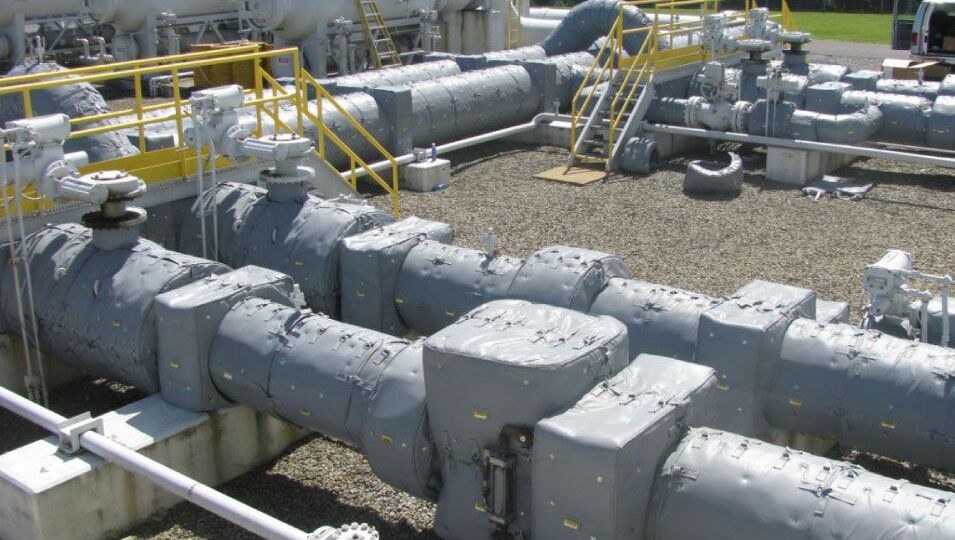One of the many benefits of hydrophobic blanket insulation is protecting a steel substrate from corrosion. When water absorbent insulation gets wet, it can’t conserve thermal energy and holds water against the equipment it is supposed to be insulating, which increases the risk of corrosion under insulation, or CUI. According to industry experts knowledgeable about CUI, a high-volume percentage of water inside insulation takes added heat energy to vaporize and that degrades the insulation’s thermal conductivity, which is then offset by accumulating heat energy. That heat energy comes from the equipment being insulated and creates a twofold problem for the facility owner.
Shannon hydrophobic blanket designs contain Lewco Super Mat®, a PTFE-impregnated Type-E needled and felted fiberglass blanket insulation. Because Shannon uses Super Mat workers don’t have to wear a mask while manufacturing or installing the material. Super Mat mitigates CUI due to its water-repelling properties. That’s why Shannon makes the insulating core of its hydrophobic thermal and acoustic blankets with hydrophobic Super Mat, which consists solely of PTFE and E-glass fiber. Relying on Super Mat means there is no amorphous silica particulate or additive that can escape as dust, posing a health risk.
Many applications, many designs
Facility owner can use hydrophobic blankets for thermal and acoustic applications. Natural gas pipelines, like those pictured here, are among the applications in which hydrophobic blankets are a perfect fit.
Because of the way Shannon’s designs its blankets, they address energy loss and/or harmful noise levels from equipment like valves, pumps, heat exchangers, vessels, and compressors with geometrically complex surfaces at refineries and processing plants. Depending
on thickness, Shannon calculates the surface temperature of its thermal blanket will range from 108 F (42 C) to 135 F (57 C) when wrapped
around a component operating at 450 F (232 C). As for noise reduction, hydrophobic acoustic blankets cut harmful noise levels by up to 15 dBA.
Making hydrophobic blankets that stand up to the elements require designers to adhere to specifications and tests like ASTM and UL. Designing to exacting standards and specifications allow blanket makers to produce a product that maintenance workers can easily take off and put back on. That attention to detail and design delivers:
- reusability,
- safety, and
- savings.
A facility owner or purchasing department might be compelled to buy the cheapest blanket, but if the blanket isn’t reused or deteriorates due to environmental conditions, is it less expensive than a well-made blanket?
To find the hydrophobic thermal blanket that best fits your application, explore these designs:
For reducing noise energy, look at these hydrophobic acoustic blanket designs:
- LT450A-TT-HES, and
- LT450A-TT-HS
“Since the 70s, blanket manufacturers have used E-glass insulation mat because of its quality and safety; it doesn’t require respiratory masks and body protection to avoid unwanted exposure,” says Frank Kovacs, president and CEO of Shannon. “E-glass is the most widely accepted and specified insulation core material because it’s the safest, most durable. It’s one reason our blankets have earned a reputation for high quality.”

